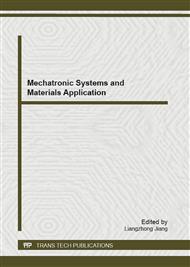p.258
p.262
p.268
p.272
p.279
p.287
p.297
p.309
p.313
Control Model of Vehicle Turning Stability Based on Neural Network
Abstract:
In order to research the turning stability of a semi-active suspension vehicle, the suspension damping BP (Back Propagation) neutral network PID (Proportion–Integral–Differential) control technique was proposed. The ideal and actual yaw rate error is taken as the control targets to carry on the turning stability closed-loop control. The vehicle yaw rate is controlled to analyze the impacts of the suspension damping change on the wheel vertical load and roll. The MATLAB software was applied to carry out simulation according to the single lane steering and step turning working conditions. The results show that the suspension damping can be controlled to control the vehicle yaw and cornering motions in the process of the vehicle turning on the high adhesion road. When the front suspension damping is increased and the rear suspension damping is decreased synchronously, the load transfer of the left and right wheels of the front and rear axles is obviously decreased, thus being able to effectively restrain the over-steering behavior of the vehicle.
Info:
Periodical:
Pages:
279-283
Citation:
Online since:
November 2012
Authors:
Keywords:
Price:
Сopyright:
© 2012 Trans Tech Publications Ltd. All Rights Reserved
Share:
Citation:


